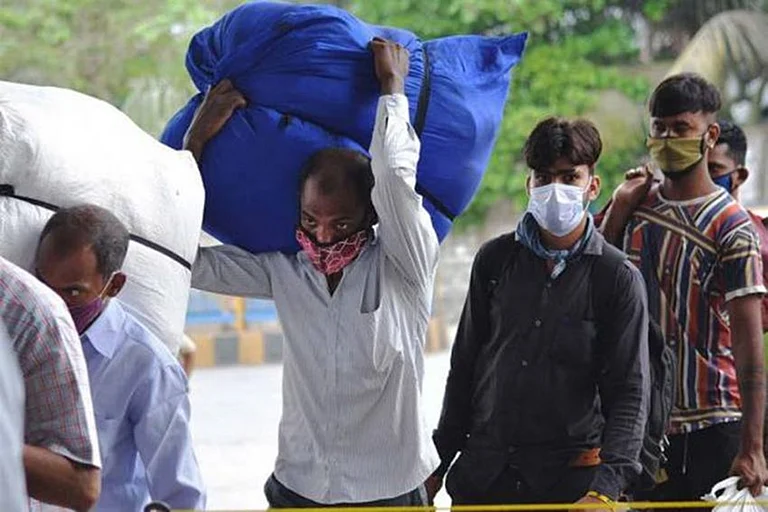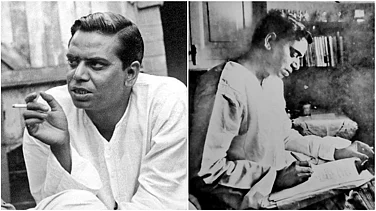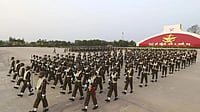"The magic of life and the magic of photography are one and the same thing...", he said.
RAGHUBIR Singh died yesterday, mid-life, mid-art, leaving behind 12 books and a retrospective exhibition that is mid-step in its journey through the world. In colour, he was the foremost photographer of our time.
Raghubir spent his creative life in serendipity, "loitering", observing cultures, devoting himself to the making of single images that over time added up to more than just a collection. His was the plain, mainstream, colour frame: no dramatic perspectives, no marginal political posture, no crutch of black-and-white. In his photographs, for those who may see, lies a human condition.
He had left India in the '70s, "during the permit-raj, when even colour film was hard to find", moving nomad-like through Hong Kong, Paris, London and New York, being published by every major magazine and exhibited at the most prestigious galleries. He regarded this success as merely a support system that allowed him to make his books, the themes of which remained steadfastly Indian. Over 25 years of work, he emerged as the master of his form.
Till his arrival, street photography had largely been the domain of a handful of western masters who worked within an orderly (limiting, alienating) social milieu. The subtractive effect of the use of only black-and-white, or rather, the non-use of colour, was the idiom that announced their art. Raghubir transformed this genre to an altogether different and exciting level: by recalling colour as fact, he pushed it back towards reality, and then brought street photography home.
He chose colour. It was an intuitive decision to begin with, a perilous one in the field of art where the seminal practitioners (all working in B&W) dismissed colour photography as being 'pretty, ...in the province of painting', even 'vulgar'. It was a choice he was made to defend all his life, even as successive institutions and contemporaries embraced his work. "Colour has never been an unknown force in India," he wrote. "It is the fountain not of new styles and ideas, but of the continuum of life itself.... If photography had been an Indian invention, I believe that seeing in colour would never have posed the theoretical or artistic problems perceived by western photographers."
He wasn't just positing a view. His stance was rooted in his understanding of his craft, his study of the historical progress of the ideas in world art and literature, and his conviction that he was consciously adding another stone to this edifice. This conscious conviction made him judge his own work by a personal measure of greatness. He refined his images, denying them traces of romanticism or sentimentality, ascribing strictly to his self-imposed discipline as a serious image-maker who redefined the ordinary. After his book on Banaras (his sixth, in which he conclusively established his masterly vision), he rejected his first two bodies of work, dropping the titles from his backlist (did he now perceive them as merely intuitive, inconsistent with his refined vision? Were they no longer worthy of his association?). The Ganga and Calcutta were revisited and published as totally different books. The old backlist was allowed back in the fold thereafter.
In this process, something turned. While his arena remained familiar, (after Ganga, Calcutta, Rajasthan, Kashmir, Ker-ala, Banaras, came Calcutta and Ganga revisited, Bombay, The Grand Trunk Road, Tamil Nadu), his way of seeing journeyed beyond the appreciation of the simple eye. Raghubir began a dialogue in which the elements in his frames took on meanings beyond their presence in his images. One could not fully understand his work, he said, if one was ignorant of other movements and ideas. His photographs gestured at cinema and writing, they reached out to early traditions of Indian painting, and they sought the plaintive singing of the bards of his own native Rajasthan. From them he learnt that even sadness is eloquent through colour. "Like Satyajit Ray, Ritwik Ghatak, Naipaul and R.K. Narayan," he said, "I stand remarkably alone."
Raghubir said many things. His crustiness didn't win many friends. His work won the silent respect of his peers, though he was judged for his proclamations. Those who didn't subscribe to his school of photography questioned his gaze; he found their idiom of protest too easy. Others queried the significance of the white Ambassador as his steed over recent years; he began a body of work that centred around the Ambassador car as form. Shunning groupism, protecting his oeuvre from that of his contemporaries (no group shows or publications in the last decade), he worked alone, his possessiveness extending from testing each batch of film, through critical processing, clinical editing, all the way to the design and layout stages into the printing press. He chose the luminaries who would write of his work in his books—Satyajit Ray, R.P. Gupta, V.S. Naipaul, R.K. Narayan—ensuring the cerebral timbre of the engagement. He carved out stringent professional relationships with the galleries and publishers that he collaborated with and litigated against those who let him down.
An uncompromising devotion to the standards he'd set for himself. An unforgiving pursuit that left personal and artistic relationships bruised in its wake. It's over now, all too early. Raghubir's Retrospective came off the walls at the Jehangir Cowasjee Hall in Mumbai a few days ago and was despatched to its next venue at Jaipur, his ancestral hometown. As I write, Raghubir's body lies somewhere in New York awaiting a ritual, while his life's work lies boxed up in his birthplace, awaiting another. Soon, his images will go up on the walls again, to be viewed for the first time in the city of his childhood where as a schoolboy he looked through a camera and absorbed the colour that was to become so much a part of him. The magic of his life, the magic of his photography.


























